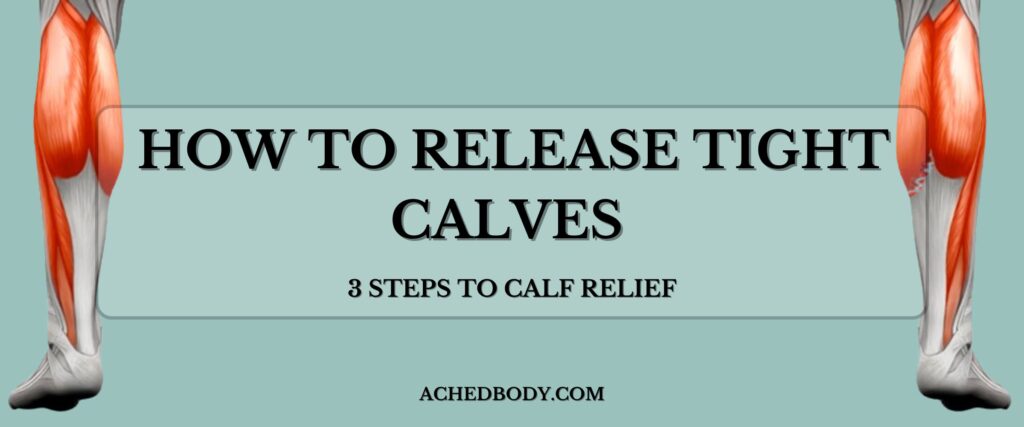
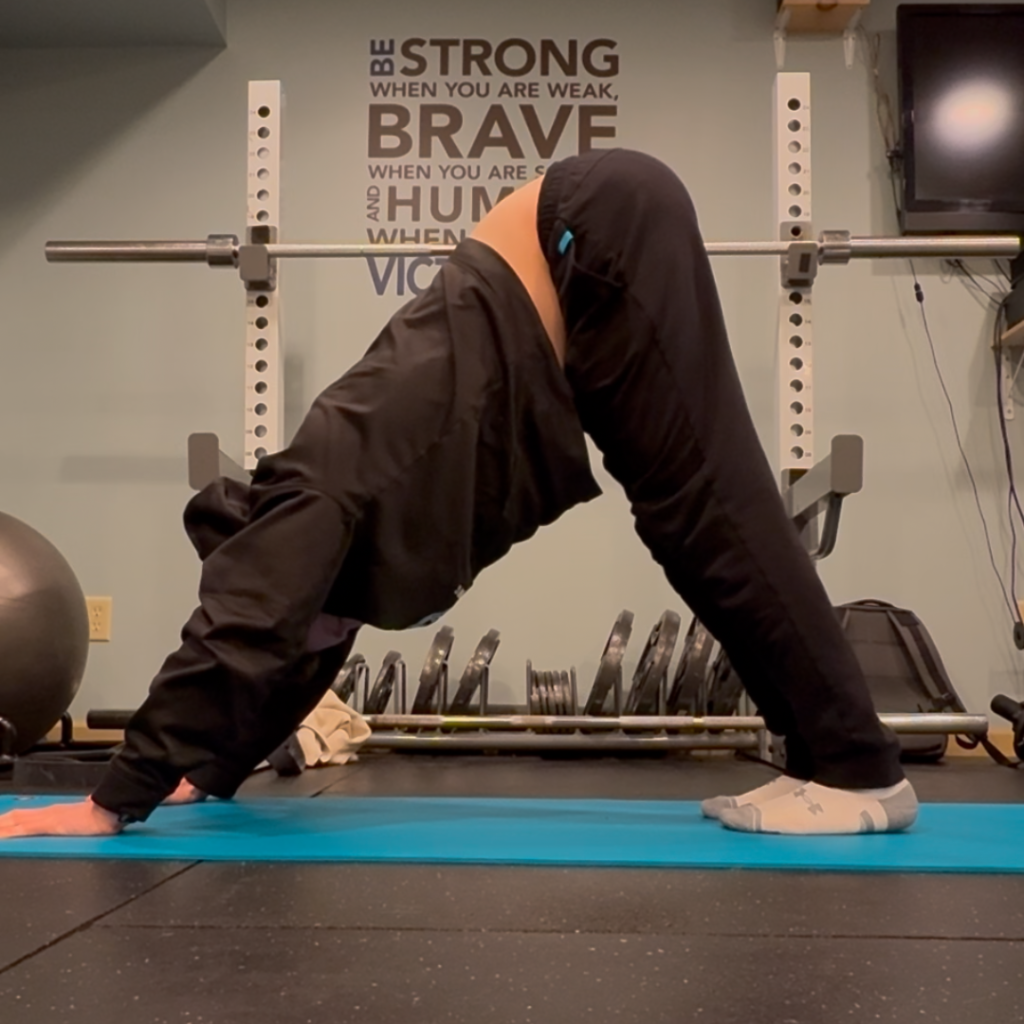
Three Steps To Fixing Tight Calves
There’s no single answer for how you can fix your calves.
If you think only stretching will fix your issues, you are setting yourself up for disappointment. Stretching is one piece in how to relieve tight calves.
But you have to address other issues like restricted tissues and trigger points.
In this guide, I will give you the tools to build on the foundational understanding of the calves and get you to the root of your persistent tightness.
For detailed explanations of what we cover in this article check out these master class articles I wrote below!
- How to trigger point your calves (deep dive)
- How to Foam Roll (myofascial release) to improve tissue mobility
The 3-Step Fix for Tight Calves
To relieve tight calves (forever), you need this strategy to target the root cause—not temporary fixes.
Trigger point therapy, myofascial release, and flexibility work to restore mobility, and prevent chronic stiffness.
Let’s get to it.
Step 1: Trigger Point Therapy (The Key to Deep Release)
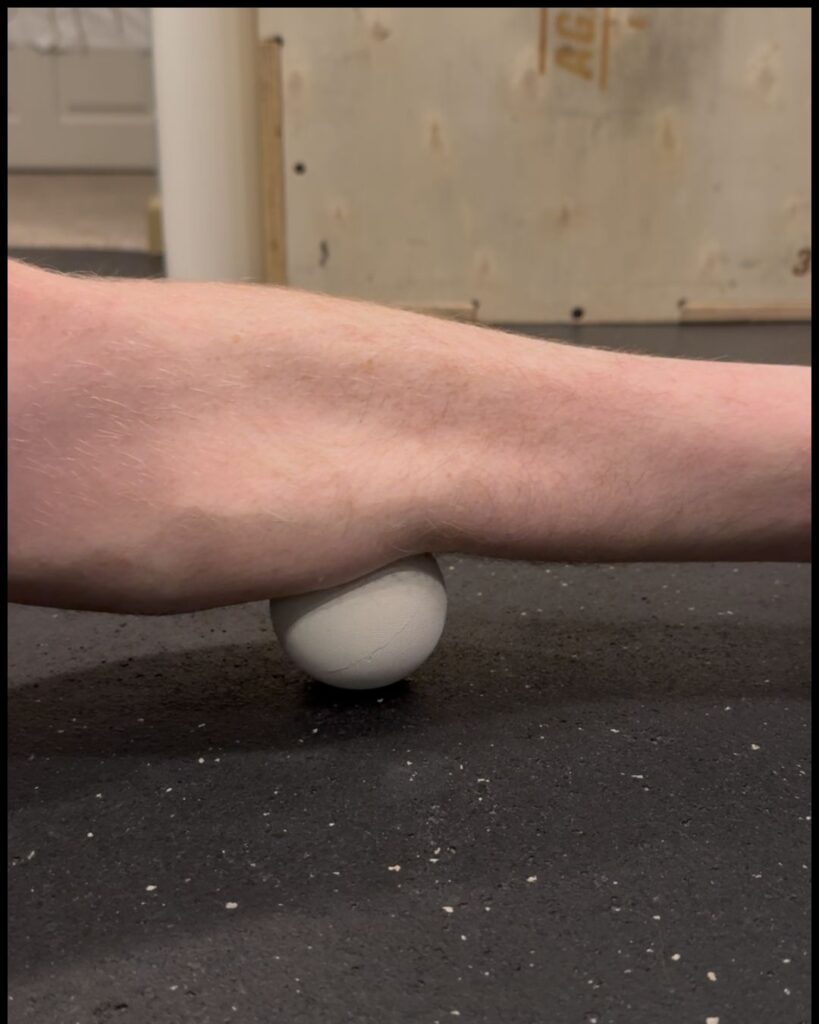
Trigger points are hypersensitive areas of tension that form in your muscles. They restrict blood flow, limit movement, and cause pain!
How to Find and Release Calf Trigger Points (watch the video here)
- Locate the Knots: Use your fingers or a massage ball to press along the gastrocnemius and soleus muscles. Trigger points feel like tight spots with burning sensations or a noticeable increase in discomfort on a specific spot.
- Apply Pressure: Hold steady pressure on the knot for 30-90 seconds until the discomfort reduces. Don’t forget to take multiple deep breaths while doing this.
For a more in-depth breakdown of trigger points in the calf—Check out our Complete Guide to Calf Trigger Point Therapy.
Step 2: Foam Rolling & Myofascial Release (Breaking Up Restrictions)
Foam rolling applies pressure just like trigger pointing does, but it applies over a much larger surface area so no one spot gets all the pressure.
This helps because improving tissue mobility requires manipulation of a larger area to break up the stiffness.
How to Foam Roll Your Calves
- Sit on the floor with your legs extended and place a foam roller or PVC pipe under your calves.
- Lift your hips about an inch off the floor or use your hands to apply pressure to your legs.
- Slowly roll in small sections moving from your ankles to just below the knees.
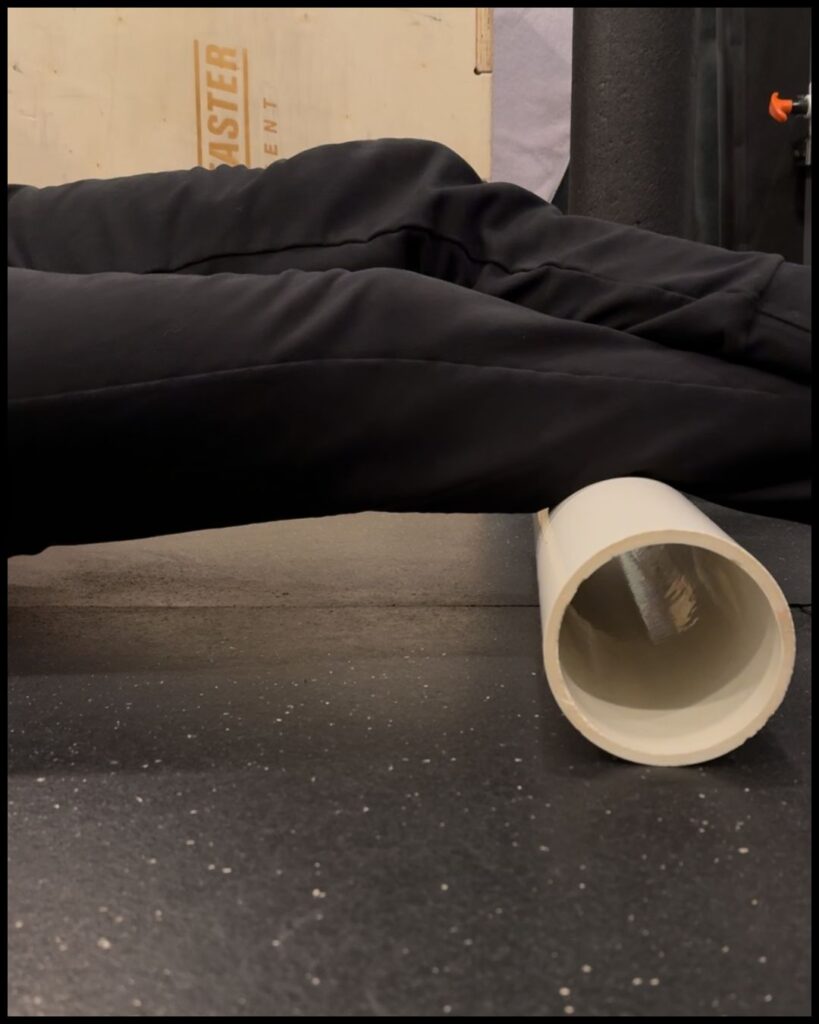
Remember to pause on tender areas for 30-60 seconds and rotate your leg to target all angles, allowing the tissue to release.
You can go for deeper pressure by stacking one leg on top of the other and rolling only one calf at a time.
Pro Tip: Move your foot in small circles or flex and point your toes while rolling to enhance the release. This forces your muscle to stretch and contract during the pressure!
For a full step-by-step guide on foam rolling techniques, visit our Foam Rolling for Calves Guide.
Step 3: Stretching & Strength Work (Long-Term Flexibility & Injury Prevention)
Trigger point therapy and foam rolling break up tightness, but stretching and strengthening ensures that tight calves don’t come back.
If you only do one, you won’t make much progress long term.
Best Stretches for Calf Tightness
I have all of my favorite ankle and calf stretches in my Ultimate Guide to Stretching, but here is a quick breakdown of a few good ones!
Gastrocnemius Stretch: Stand facing a wall, place one foot behind the other, and press your heel into the ground. Keep your back leg straight.
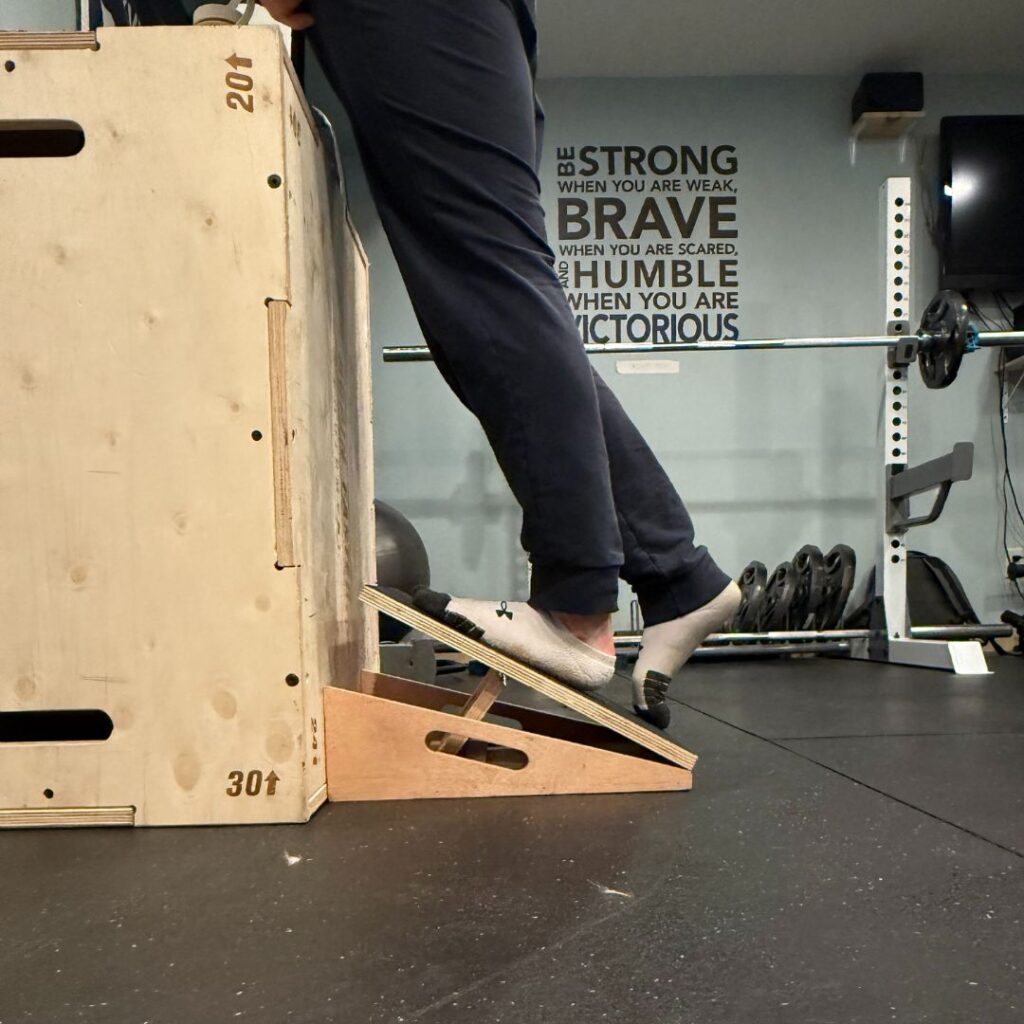
You can improve the stretch by using a staircase to let your heel hang from, or buy a slant board to get very serious about your calf health.
Soleus Stretch: Perform the same stretch, but bend your knee slightly to target the lower calf (soleus muscle).
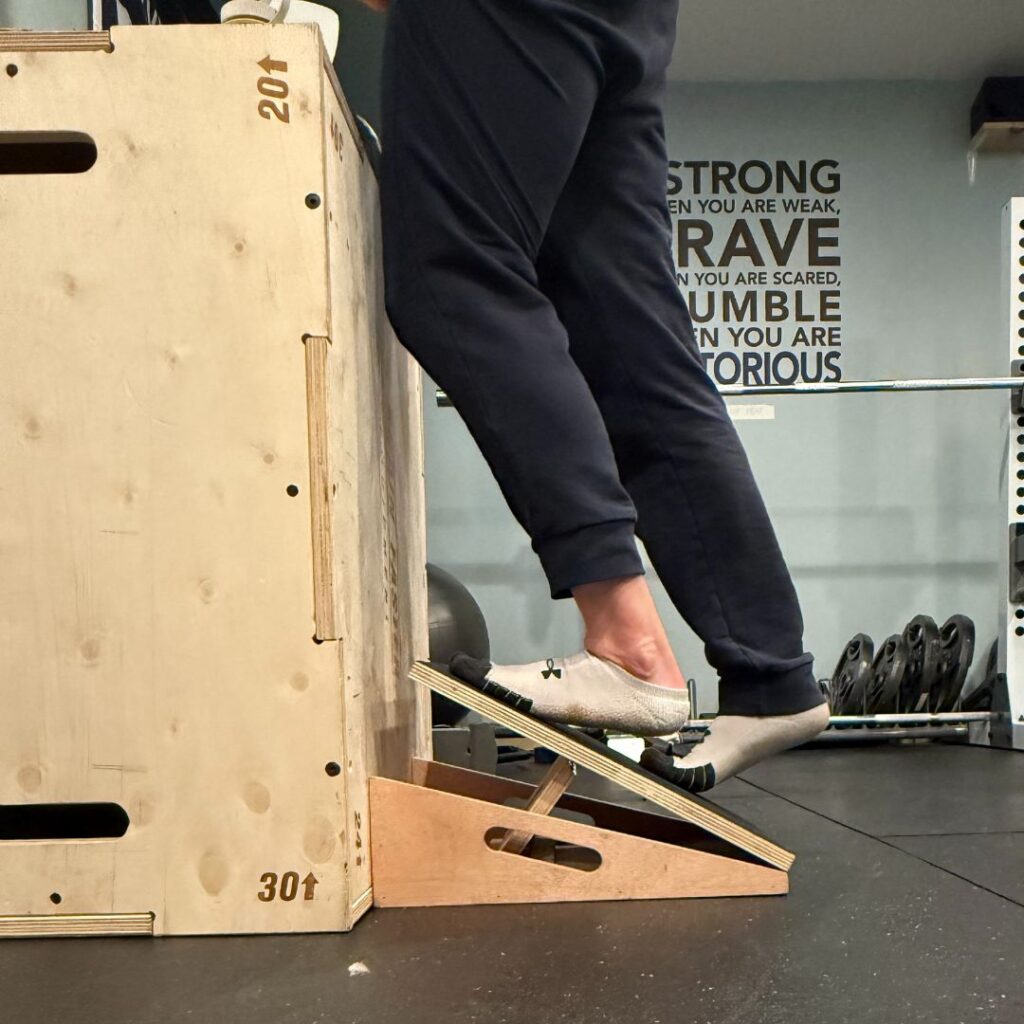
Dynamic Mobility Drills
After you’ve spent a few days working on your trigger point and stretching protocol, begin adding in some Dynamic Mobility Drills.
I am a huge fan of the Knees Over Toes Guy and use his deep lunge and deep calf raises to integrate the healthier tissue!
Learn more with the Ultimate Guide to Stretching.
Combining All Three for Maximum Results
It takes a lot of effort to create change in your body, but it doesn’t need to destroy your life. If you can give yourself 10 minutes a day to trigger point or foam roll, stretch and reintegrate those changes with specific mobility drills, your life will change!
Together, they create a complete strategy to fix tight calves:
1️⃣ Trigger Point Therapy or Foam Rolling releases and improves knots at the source.
2️⃣ Stretching to relax and lengthen
3️⃣ Mobility Work will prevent tightness from returning.
Want to learn more?
All of my calf-related articles are on the “Fix My Calf” page. My Ultimate Guide To Trigger Pointing and stretching are always available as well!
Let me know if you need more help! Good luck.
-Nick